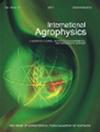保护性耕作对春小麦产量及土壤矿质氮碳含量的影响
IF 1.7
4区 农林科学
Q2 AGRONOMY
引用次数: 10
摘要
在90亿人口的全球粮食需求下,维持一个可持续的环境将是下一代面临的决定性挑战之一。目前,由于全球粮食需求的增加,农民和农业学者面临着相当大的压力(Shah和Wei,2019)。根据联合国的预测(2015年),到2050年,全球人口将达到97亿,这可能意味着未来对粮食生产的需求更大。小麦(Triticum aestivum L.)是目前最重要的谷物作物,因此它对全球粮食安全做出了巨大贡献。它是人类饮食的主要组成部分,负责满足人体的大部分热量需求。然而,由于作物生产力停滞不前以及可耕地有限,满足全球粮食需求变得越来越具有挑战性。因此,采用了集约种植制度和最高允许水平的无机肥料,以提高作物产量。不幸的是,这些方法降低了土壤质量和环境污染(Guo et al.,2010)。因此,为了在未来实现可持续的农业水平,保持和提高波兰科学院©2021土壤物理研究所的土壤营养状况至关重要本文章由计算机程序翻译,如有差异,请以英文原文为准。
Effect of conservation tillage on yield of spring wheat (Triticum aestivum L.) and soil mineral nitrogen and carbon content
Maintaining a sustainable environment with a global food demand from a population of nine billion will be one of the defining challenges for the next generation. Currently, farmers and agriculture scholars are under considerable pressure due to the enhancement of worldwide food demands (Shah and Wei, 2019). According to UN predictions (2015), the worldwide population is set to reach at 9.7 billion by 2050, which probably means larger demands for grain production in the future. Wheat (Triticum aestivum L.) is currently the most important cereal crop so it follows that it makes a vast contribution to universal food security. It is a chief constituent of the human diet which is responsible for meeting the majority of the calorie requirements of the human body. However, fulfilling worldwide food requirements is becoming ever more challenging due to stagnant crop productivity as well as the limited availability of arable land. Accordingly, an intensive cropping system and the maximum permissible level of inorganic fertilization have been used to attain higher crop production. Unfortunately, these approaches lead to reduced soil quality and environmental pollution (Guo et al., 2010). Therefore, in order to achieve a sustainable level of agriculture in the future, it is vitally important to maintain and enhance the soil nutrient status of © 2021 Institute of Agrophysics, Polish Academy of Sciences
求助全文
通过发布文献求助,成功后即可免费获取论文全文。
去求助
来源期刊

International Agrophysics
农林科学-农艺学
CiteScore
3.60
自引率
9.10%
发文量
27
审稿时长
3 months
期刊介绍:
The journal is focused on the soil-plant-atmosphere system. The journal publishes original research and review papers on any subject regarding soil, plant and atmosphere and the interface in between. Manuscripts on postharvest processing and quality of crops are also welcomed.
Particularly the journal is focused on the following areas:
implications of agricultural land use, soil management and climate change on production of biomass and renewable energy, soil structure, cycling of carbon, water, heat and nutrients, biota, greenhouse gases and environment,
soil-plant-atmosphere continuum and ways of its regulation to increase efficiency of water, energy and chemicals in agriculture,
postharvest management and processing of agricultural and horticultural products in relation to food quality and safety,
mathematical modeling of physical processes affecting environment quality, plant production and postharvest processing,
advances in sensors and communication devices to measure and collect information about physical conditions in agricultural and natural environments.
Papers accepted in the International Agrophysics should reveal substantial novelty and include thoughtful physical, biological and chemical interpretation and accurate description of the methods used.
All manuscripts are initially checked on topic suitability and linguistic quality.
 求助内容:
求助内容: 应助结果提醒方式:
应助结果提醒方式:


